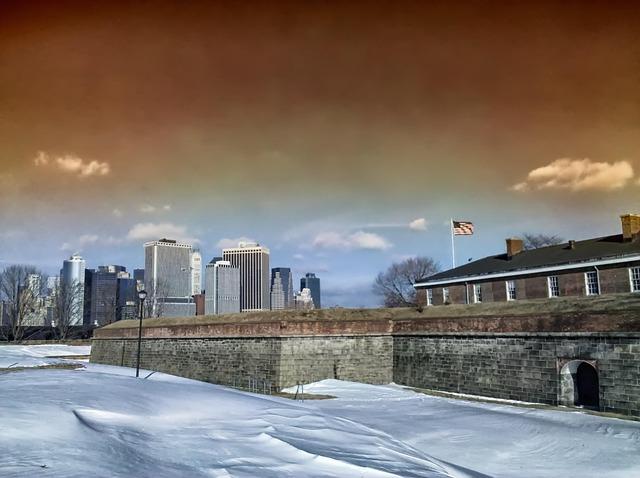New York Governor Kathy Hochul has signaled hesitation regarding Assemblymember Zohran Mamdani’s ambitious proposal to implement free bus service across the state. The plan, aimed at increasing public transit accessibility and reducing carbon emissions, faces significant fiscal and logistical scrutiny from the governor’s office. As the debate intensifies, the future of fare-free bus rides in New York hangs in the balance, highlighting ongoing tensions over transit funding and social equity in the region.
Governor Signals Caution Over Free Bus Proposal in New York
Governor Kathy Hochul has expressed reservations regarding the ambitious free bus transit initiative proposed by Assembly member Zohran Mamdani. While recognizing the potential benefits for low-income residents and environmental goals, Hochul has urged a more measured approach that carefully evaluates the financial implications for New York’s budget. She emphasized that enduring funding sources must be secured before moving forward with any wide-scale fare elimination efforts.
Key concerns highlighted by the governor include:
- Budgetary sustainability: The impact on state and local revenues if bus fares are eliminated without alternative funding.
- Service quality: Ensuring that free fares do not lead to overcrowding or reduced service efficiency.
- Equity considerations: Targeting subsidies to those who need them most rather than universal free access.
| Aspect | Governor’s Position | Proposal Focus |
|---|---|---|
| Funding | Requires secure and long-term funds | Fare elimination with uncertain revenue replacement |
| Service Impact | Maintain current quality and reliability | Potential increase in ridership strain |
| Social Equity | Targeted support preferred | Universal free access |
Economic and Infrastructure Concerns Behind the Pushback
Critics argue that implementing a free bus system across New York would impose significant strain on the state’s already tight budget. The fiscal concerns center around the potential loss of fare revenue, which currently helps fund maintenance and operational costs. Officials highlight that without a clear strategy to offset these losses, the initiative could lead to increased taxes or cuts in other essential services. Additionally, the state’s recent economic uncertainty makes lawmakers cautious about committing to programs with large, recurring expenses.
Beyond the financial implications, infrastructure limitations remain a critical hurdle. The current public transportation network,including buses and terminals,faces capacity constraints and aging equipment. Experts emphasize that before expanding access, investments must be made to modernize and scale up facilities to avoid overcrowding and service disruptions. Key challenges include:
- Upgrading bus fleets to environmentally amiable models
- Expanding route coverage without compromising frequency
- Enhancing maintenance facilities to support higher demand
| Factor | Current State | Required Improvements |
|---|---|---|
| Bus Fleet | 1,200 buses,mostly diesel | Expansion with electric/hybrid models |
| Maintenance Facilities | 5 major depots | Additional depots and upgrades |
| Route Coverage | Extensive but uneven | Expanded and more frequent service |
Stakeholder Reactions from Transit Advocates and Officials
Responses from transit advocates have been overwhelmingly critical,arguing that the governor’s decision stalls a pivotal opportunity to make New York’s public transportation more accessible and equitable. Advocates stress that the plan proposed by Zohran Mamdani aimed at reducing economic barriers and environmental impact by increasing bus ridership through fare elimination. They assert that the governor’s hesitation disregards mounting evidence from cities nationwide that have successfully implemented free bus rides without compromising service quality.
- Equity concerns: Advocates highlight that free bus rides would disproportionately benefit low-income riders who rely most heavily on public transit.
- Environmental impact: Free fares could encourage a shift away from private vehicles, reducing urban congestion and pollution.
- Precedents: Several cities have reported improved ridership and overall community benefits post-implementation.
Meanwhile, officials have expressed a mix of cautious optimism and logistical apprehension.While some acknowledge the potential long-term benefits of a fare-free system,concerns over funding sources and operational sustainability have tempered enthusiasm. Several have called for additional feasibility studies and stakeholder consultations before committing to a substantial policy shift. This tempered response reflects a balancing act between visionary transit reform and pragmatic governance under fiscal constraints.
| Official Perspective | Key Concern | Suggested Next Steps |
|---|---|---|
| State Transit Commissioner | Budget impact and state subsidies | Commission a fiscal analysis study |
| City Council Member | Public support and community feedback | Host town hall meetings |
| Environmental Policy Advisor | Carbon footprint reduction goals | Explore phased implementation |
Potential Pathways for Revising and Resubmitting the Plan
In light of the governor’s recent decision to stall Zohran Mamdani’s ambitious proposal, stakeholders are now exploring alternative approaches to revive and refine the initiative. Key considerations include:
- Incremental Implementation: Piloting free bus service in select boroughs to assess impact and feasibility before a citywide rollout.
- Enhanced Funding Strategies: Seeking public-private partnerships and exploring congestion pricing revenue to supplement the transit budget.
- Community Engagement: Amplifying dialogues with local residents, transit workers, and civic groups to address concerns and build broader support.
Moreover, policymakers are weighing adjustments for more targeted benefits rather than universal coverage. The table below outlines potential revisions under consideration:
| Revision Aspect | Proposed Adjustment | Expected Outcome |
|---|---|---|
| Coverage Area | Focus on low-income neighborhoods | Greater equity, cost containment |
| Eligibility Criteria | Income-based or age restrictions | Prioritize vulnerable populations |
| Service Hours | Extended peak times only | Maximize efficiency, reduce expenses |
In Retrospect
As the debate over free public transportation continues to unfold in New York, Governor Kathy Hochul’s decision to slow the implementation of Zohran Mamdani’s ambitious plan highlights the complexities of balancing progressive initiatives with fiscal responsibility. While supporters argue that free buses could significantly improve accessibility and reduce emissions, critics caution against the potential economic impacts. The outcome of this policy discussion will likely shape the future of urban transit in New York, reflecting broader national conversations about public infrastructure and social equity.




